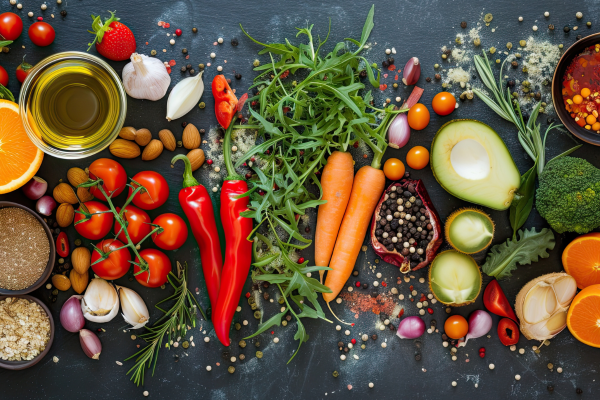“Uncovering the Truth About Anti Nutrients: Are They as Harmful as They Seem?” – By Dr. Harold Gunatillake

*Antinutrients are natural or synthetic compounds found in many foods that can interfere with the absorption of nutrients.
*Anti-nutrients decrease the nutritional value of food by blocking the absorption of its nutritional value of food by blocking the absorption of its nutritional principles
*The impact of anti-nutrients on long-term human health is a current area of research. Some foods may contain residual anti-nutrients after processing and cooking, but the health benefits of eating these foods outweighs any potential adverse effects.
Introduction
Hello there, fellow knowledge seekers! Welcome back to our channel. Today, we’re diving deep into a topic that might sound a bit ominous: anti-nutrients. But fear not! By the end of this video, you’ll have a clearer understanding of what they are, how they affect our bodies, and whether we should be concerned.
Now What Are Anti-Nutrients?
Anti-nutrients—those sneaky compounds that play hide-and-seek in our food—are fascinating and sometimes a tad troublesome. They’re like the
quirky side characters in a nutrition drama. So, let’s spotlight a few foods where these little troublemakers like to hang out:
Anti-nutrients—sounds like something straight out of a sci-fi movie. Well, not quite. These compounds are naturally present in certain foods, both plant based and animal-derived. Let’s break it down:
By Definition: The term “anti-nutrients” suggests precisely what they do. While nutrients nourish us, anti-nutrients
can block the absorption of nutrients.
Sneaky little things, aren’t they?
Where Do They Hide? You’ll find anti-nutrients in various foods. Here are some examples:
Lectins are the rebels of the anti-nutrient world. They are found in legumes (beans, peanuts, soybeans) and whole grains, and they can interfere with calcium, iron, phosphorus, and zinc absorption.
Whole Grains: Even that wholesome loaf of whole-grain bread has them. Nuts and Seeds: Almonds, peanuts, and sunflower seeds have a secret life as lectin carriers.
Oxalates: These are like the drama queens of the plant kingdom. They’re found in:
Coffee and Tea: That morning, cuppa? Yep, it’s got a touch of oxalates. Leafy Greens: Spinach, kale, and their green pals are all part of the oxalate crew. Potatoes and Beets: Even the humble spud and the vibrant beet have a dash of oxalates.
Glucosinolates and Goitrogens hang out in cruciferous veggies like broccoli, Brussels sprouts, and kale. They can interfere with iodine absorption, potentially affecting thyroid function.
Phytates (Phytic Acid): These are like the nutrient snatchers. They hang out in:
Whole Grains: Brown rice, oats, and quinoa are all phytate-rich. Seeds: Sunflower seeds, pumpkin seeds—watch out for these little phytate bandits. Legumes: Beans, lentils, and peas—they’ve got their fair share too.
They can decrease the absorption of iron, zinc, magnesium, and calcium. Saponins are the soap opera stars of antinutrients.
They’re found in Legumes, including Chickpeas, lentils, and soybeans—saponin central.
Whole Grains: Buckwheat, oats, and quinoa have their saponin fan club.
Now, here’s the twist: Not all antinutrients are villains. Some polyphenols and flavonoids are like quirky sidekicks—sometimes a bit naughty but mostly harmless. They’re found in tea, coffee, wine, and certain whole-plant foods. Just don’t overconsume them, and they’ll play nice.
Tannins: Tannins can decrease iron absorption and are found in tea, coffee, and legumes.
The Great Debate: Harm vs. Benefit goes on.
Let’s address the elephant in the room: Are anti-nutrients harmful? The Research: Scientists are still unravelling the mysteries of anti-nutrients. Some studies suggest they might lead to nutritional deficiencies, bloating, nausea, rashes, and headaches. But hold your horses—we’re not done yet. Balancing Act: Here’s the twist: The health benefits of eating foods containing anti-nutrients often outweigh any potential harm. Yes, you heard me right! These foods come with a package deal: vitamins, minerals, fibre, and other goodies. So, don’t ditch your lentils just yet.
Now, the Practical Tips are:
Variety: Mix it up! Eating various nutritious foods daily helps offset minor nutrient losses caused by anti-nutrients.
Preparation Matters: Soak, sprout, or boil your food. Many anti-nutrients can be tamed this way.
Meal Timing: If you’re a tea lover, consider sipping it between meals rather than with your iron-rich steak.
Do eggs have antinutrients?
Avidin is an active antinutrient found in raw egg whites. It binds tightly to biotin (vitamin B7) and can cause B7 deficiency in animals and, in extreme cases, humans.
Conclusion
Remember, it’s all about balance. Anti-nutrients might be the quirky characters in our nutritional story, but they’re part of the bigger picture. So, embrace that lentil curry, sip your herbal tea, and keep exploring the fascinating world of food!
Thanks for tuning in, and if you found this video helpful, hit that like button and subscribe! Until next time, stay curious and keep exploring.
Nuts, beans, and legumes contain phytic acid, an
antinutrient that hinders mineral absorption. Some grains like brown rice, buckwheat, and millet require around 7 hours of soaking, while others like rice, barley, wheat, and corn need 12-24 hours and a water change.
Sources: Harvard T.H. Chan School of Public Health Live Science
Food Revolution Network
You may peruse my past YouTube articles & newsletters on my website
























